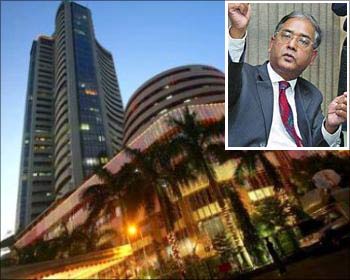Floyd Norris, the Chief Financial Correspondent and a blogger on The New York Times has a very interesting analysis on G.D.P numbers in the United States (US). He states that the government has limited influence on the economy and the president can have limited influence on government policy.
He says that
Normal economic cycles mean that growth is likely to be less impressive for a president who enters office at the end of a boom, as George W. Bush did, and better for one who enters when growth is weak, as Bill Clinton and Ronald Reagan did. If normal cyclical factors return, and President Obama has a second term, his record should end up much better than it currently appears. If he loses, he could be like Gerald Ford, who also took office during a deep recession.
He also said that all the presidents except George W. Bush (Jr. Bush) and Barack Obama joining the office after World War II have done fairly well having a growth ranging from 2.2 per cent to 5.4 per cent. It is with George H. W. Bush (also called as Sr. Bush), the number started faltering. If Obama by any means gets nominated for a second term, the GDP growth may turn rosy and better than it currently appears as said by the theory of normal economic cycles. The table given below also reflects that Democratic Presidents performed better than Republican except under Reagan.
What does India’s GDP say under different Prime Ministers?
 The table 2 depicts the picture which is entirely different. India boasts of multi-party system unlike in US where they are two major parties. Post independence era, India was ruled mostly by Congress before given a break in 1977 to Janata Party, a party coming into existence after the famous Jay Prakash Aandolan. Immediately after independence under Pandit Nehru regime, the GDP grew at an average rate of 3.8 per cent which decreased marginally to 3.6 per cent under Mrs. Gandhi’s regime. Janata Party, a non-congress government came into ruling under Morarji Desai and didn’t disappoint the country. They delivered 6.5 per cent on an average before faltering to -5.2 per cent under Charan Singh regime. This is the first and only PM’s tenure in which India showed a negative GDP growth. Congress and Janata Dal swiftly changed powers and scored an average GDP score ranging from a low of 5.2 per cent to a high of 6.1 per cent.
The table 2 depicts the picture which is entirely different. India boasts of multi-party system unlike in US where they are two major parties. Post independence era, India was ruled mostly by Congress before given a break in 1977 to Janata Party, a party coming into existence after the famous Jay Prakash Aandolan. Immediately after independence under Pandit Nehru regime, the GDP grew at an average rate of 3.8 per cent which decreased marginally to 3.6 per cent under Mrs. Gandhi’s regime. Janata Party, a non-congress government came into ruling under Morarji Desai and didn’t disappoint the country. They delivered 6.5 per cent on an average before faltering to -5.2 per cent under Charan Singh regime. This is the first and only PM’s tenure in which India showed a negative GDP growth. Congress and Janata Dal swiftly changed powers and scored an average GDP score ranging from a low of 5.2 per cent to a high of 6.1 per cent.
Narasimha Rao government could not get much benefit after opening of Indian economy and could not score well in terms of numbers. The number nosedived further to 5.2 per cent. Janata Dal came to power for a short tenure and gave a comfortable growth of 8 per cent but faltered again to 4.3 per cent under H D Deve Gowda. Bhartiya Janta Party, a reformed version of Janata Party delivered an average GDP figure of 5.9 per cent. At the end of his tenure, the country GDP went as high as 10 per cent as he rationalized many reforms in the country. Dr. Manmohan Singh, the current Prime Minister and the then Finance Minister when India opened its economy scored an impressive figure of 8.6 per cent. However, India also witnessed many scandals and high level corruptions under his tenure, causing the country’s exchequer a loss of billions of dollars.
Overall, on an average, Congress gave an average GDP figure of 4.91 per cent during their tenures while non-Congress governments gave an average GDP figure of 4.42 per cent.
In India, the strong consumption story and Next’s Trillion Dollar opportunity has worked really well in recent years which helped Congress a lot. However, the figures also worsened in terms of increased deficits and borrowings as the government went for high spending on social measures schemes. Though interest rates are less now in comparison to 90s, the high interest rates (real saving interest rate) are decelerating the growth and affecting the overall buildup of India a lot.
Hope we will get the best out of it and India will bounce back!
Happy Investing!
- Amar Ranu



